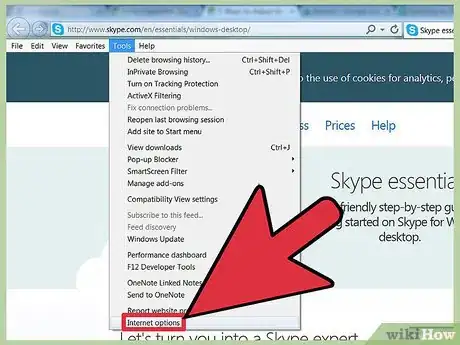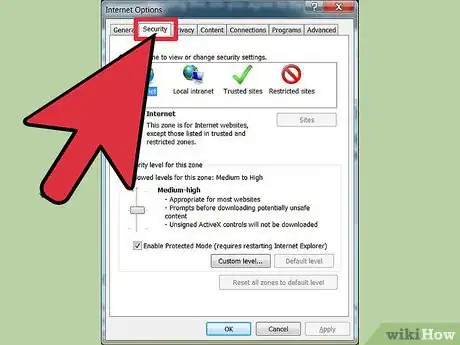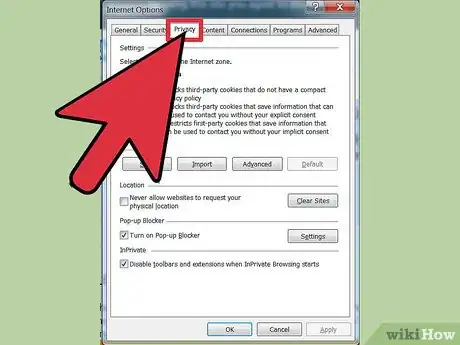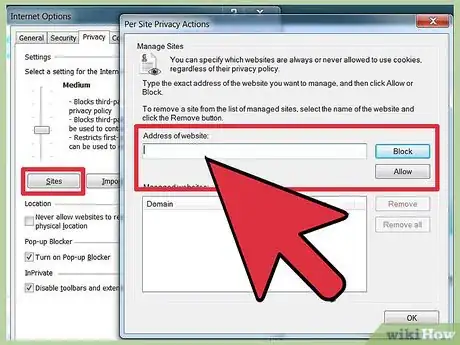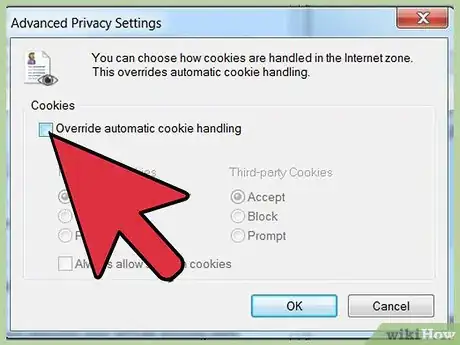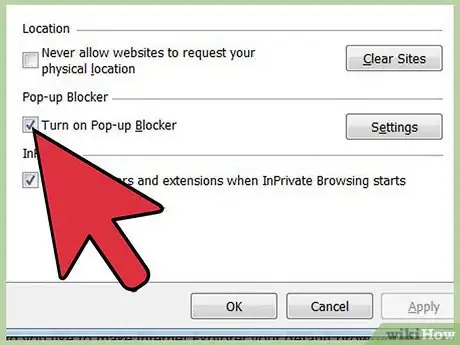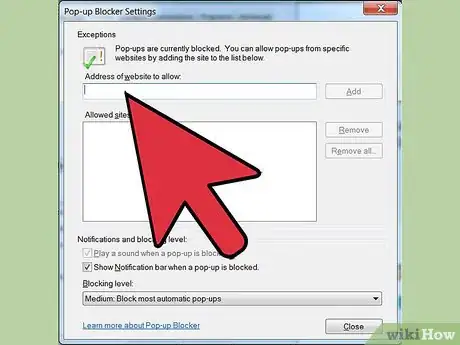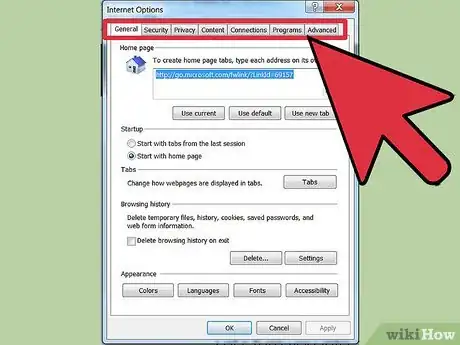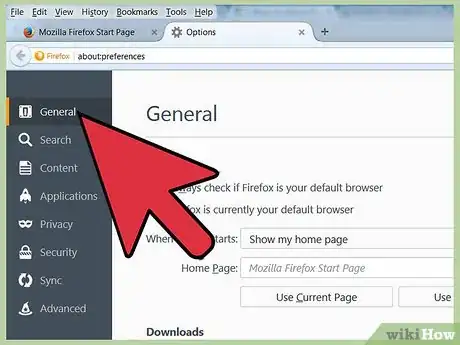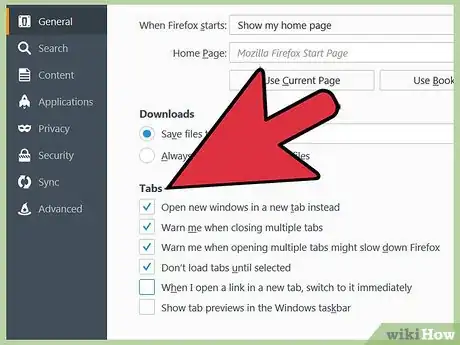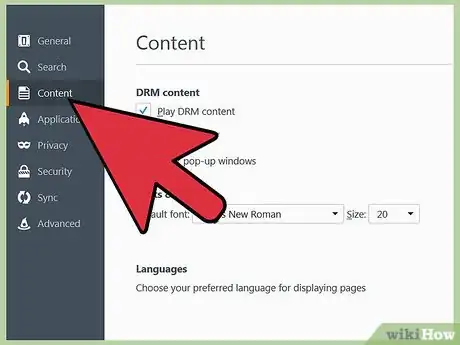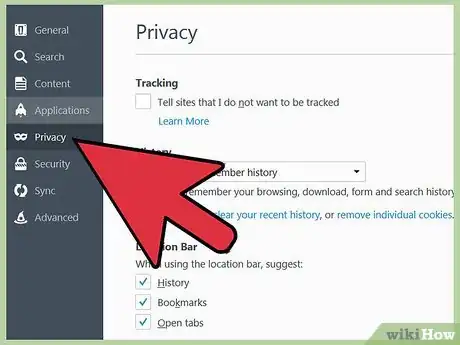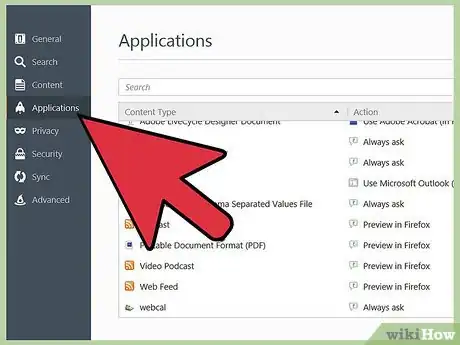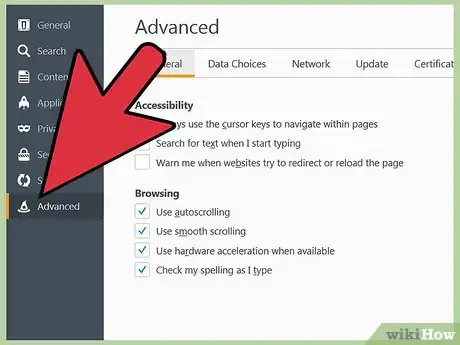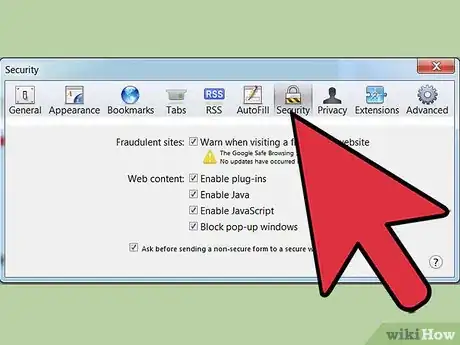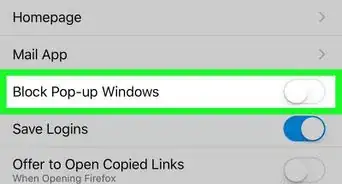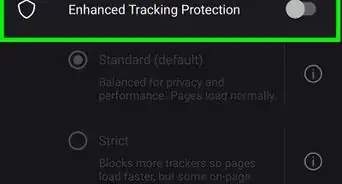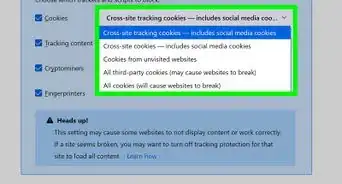A detailed guide on adjusting your web browser's settings
X
wikiHow is a “wiki,” similar to Wikipedia, which means that many of our articles are co-written by multiple authors. To create this article, volunteer authors worked to edit and improve it over time.
There are 8 references cited in this article, which can be found at the bottom of the page.
This article has been viewed 256,113 times.
Learn more...
Browsers allow users to find and read websites on the Internet. There are several browsers available with different options. Browsers use these options to help protect a user's privacy and computer. Many browsers have their settings under the same or similar tabs. This article will tell you how to adjust browser settings.
Steps
Method 1
Method 1 of 5:
Internet Explorer 7 and 8 Security Settings
-
1Open Internet Explorer
-
2Click on "Tools" on the Menu bar. Scroll down and select "Internet Options."
- Click on the "Security" tab. You will be able to customize security settings.
Advertisement -
3Click on the "Security Zone" that you want to customize. You can add websites to a zone by typing in the web address and clicking "add this website to the zone."
- You can also remove a website from a zone by clicking "Sites" and selecting the website you want to remove. Click the "Remove" button to confirm your choice.
Advertisement
Method 2
Method 2 of 5:
Internet Explorer 7 and 8 Privacy Settings
-
1Follow steps 1 and 2 in the previous section of the article except select the "Privacy" tab instead of "Security."
-
2Select the setting you want to change. You can adjust your browser's cookie handling by changing the standard selector for all cookies.
- You can also choose your cookie handling by website or cookie type. These options can be found by selecting the "Sites" tab or the "Advanced" tab.
-
3Click "Sites" to allow or block cookies from specific sites.
- Click "Allow" or "Block" and then "OK" to complete your changes.
-
4Click "Advanced" and check "override automatic cookie handling."
- Choose your desired settings for the different types of cookies.
-
5Turn on or off your popup blocker. This option is available under the "Cookies" portion of the "Privacy" tab.
-
6Click Settings
- Then select your "blocking level" at the bottom of the popup window.
- You can also choose to allow popups by specific websites by typing in the web address and clicking the "Add" button.
Advertisement
Method 4
Method 4 of 5:
Firefox (all)
-
1Open Firefox
-
2Click on "Tools" on the Menu bar. Scroll down and select "Options."
- A window will open that will contain tabs that are similar to the ones in Internet Explorer.
-
3Click on the "General" tab to select your default homepage, set download options and manage your "add-on" programs.
-
4Manage your tab settings under "Tab" in the "Options" window. You can choose to open windows in tabs or choose options to manage multiple tabs in this window.
-
5Select the "Content" tab to modify how webpages are displayed, including the preferred language and the appearance of webpages.
-
6Click on "Privacy" and the "Security" tabs to manage privacy and security settings such as cookie and popup handling.
-
7Select the "Application" tab to manage how Firefox handles different types of files such as PDF files or music files.
- Firefox can use applications or plug-ins to open and use different file types. You can also choose to have Firefox save the file to your computer.
-
8Use the "Advanced" tab to modify connection settings and advanced browser settings such as "auto-scrolling." This tab also allows you to control site encryption settings.
Advertisement
Method 5
Method 5 of 5:
Safari
-
1Open Safari
- Click on the Gear and select "Block Pop-up Windows." You can use this option to turn these settings on and off.
- Click on the Gear again and select "Preferences."
-
2Click on the "General" tab to choose your homepage and select options for downloading files.
-
3Choose the "Appearance" tab to select what you want Safari to look like. Options such as font and size can be found under this tab.
-
4Select the "Autofill" tab to select which forms you want Safari to fill out for you. You can also choose not to use this tab.
-
5Choose the "Security" tab to adjust plug-in features, cookie handling and parental controls.
Advertisement
Community Q&A
-
QuestionI tried to follow the directions for my Firefox browser, but there is no "options" option under Tools. All the other options were there (downloads, add-ons, etc.), but without an "options" choice, I can't proceed. What can I do?
 Community AnswerIt sounds like your version of Firefox is different from the one used in the guide. Help with the current version of fFirefox can be found out support.mozilla.org. You may simply need to update.
Community AnswerIt sounds like your version of Firefox is different from the one used in the guide. Help with the current version of fFirefox can be found out support.mozilla.org. You may simply need to update. -
QuestionHow do I install Javascipt?
 Community AnswerJavascript is a simplistic programming language built inside web browsers like Chrome and Firefox. If you're trying to go to a website that says your browser doesn't support Javascript, check your browser settings to ensure Java is enabled.
Community AnswerJavascript is a simplistic programming language built inside web browsers like Chrome and Firefox. If you're trying to go to a website that says your browser doesn't support Javascript, check your browser settings to ensure Java is enabled.
Advertisement
Warnings
- The Department of Homeland Security advises Safari users not to use the "Autofill" feature for computer security reasons.⧼thumbs_response⧽
Advertisement
References
- http://windows.microsoft.com/en-US/windows-vista/Change-Internet-Explorer-Security-settings
- http://windows.microsoft.com/en-US/windows-vista/Security-zones-adding-or-removing-websites
- http://windows.microsoft.com/en-US/windows-vista/Block-or-allow-cookies
- http://windows.microsoft.com/en-US/windows-vista/Internet-Explorer-Pop-up-Blocker-frequently-asked-questions
- http://support.mozilla.com/en-US/kb/Options%20window
- http://support.mozilla.com/en-US/kb/Options%20window%20-%20General%20panel
- http://support.mozilla.com/en-US/kb/Options%20window%20-%20Tabs%20panel
- http://www.us-cert.gov/reading_room/securing_browser/#Safari
About This Article
Advertisement

